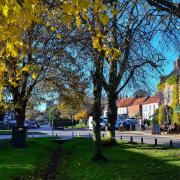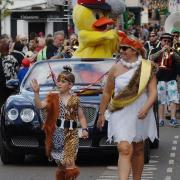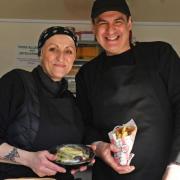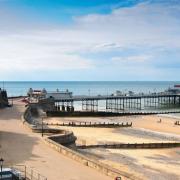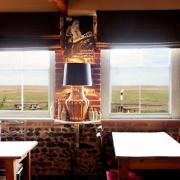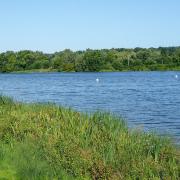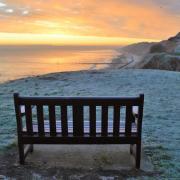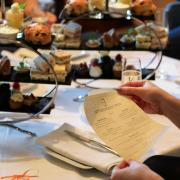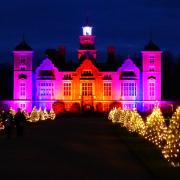Ancient buildings are in a league of their own

Have you noticed the majestic way churches can dominate the Norfolk landscape? Their lofty towers, visible for miles, can feel as much a part of Broads as hearing the boom of a bittern or a getting a glimpse of a swallowtail butterfly.
The five churches on these pages are just a short walk from broads and rivers and, at two of them, you can virtually moor up outside.
You might be forgiven for clinging to your car - we are all in need at times - but set your sights on one or two churches rather than all five in one go and you can slacken the pace. Make it a slow-motion day by pottering in a day-boat, tramping across the fields in the fresh air, or cycling down twisty lanes lined with reeds waving in the breeze.
Let your mind wander back through the centuries as you discover the sheer glory of our Broads' churches, fashioned and furnished by the devoted labours of past generations. You'll come across ancient wall paintings, dazzling stained glass, exquisite carving and the lavishly decorated chancel screens for which Norfolk is justly famous.
It's remarkable that we are able to wander freely into buildings of this stature to wonder at their contents and reflect on so many centuries of devotion, prayer and worship.
Churches continue to be loved and treasured by the volunteers who care for them and the communities they serve. So, sunburnt and happy, don't forget a donation to pop in the wall safe as a thank you for an unforgettable day out.

Exploring Norfolk churches
Visiting churches can be rewarding but tricky if you struggle with mobility or worry about how to find the nearest loo. Fortunately that information and much more is now available on a dedicated website launched by the Diocese of Norwich. At the click of a button, you can find churches in a given area with their key features, opening times, footpaths, shops and parking.
- St Helen's, Ranworth
It's easy to see how St Helen's became known as the Cathedral of the Broads, attracting visitors from all over the world. Pilgrims, sailors, church crawlers and families stream in on summer days and this grand and spacious church offers hospitality to them all. Not only can you see one of the finest medieval screens in England, there's a rare and beautiful illuminated manuscript to wonder at. Bittern, heron and swallowtail butterfly are stitched into the altarpiece and you can climb the tower to see the Malthouse Broad below and the full glory of the landscape beyond. Coffee and cake in the church visitor centre is a must.

- St Peter, Belaugh
The beauty of this church is its dramatic location high on a bluff over a bend in the River Bure, a view that inspired the writer John Betjeman's lifelong passion for churches. You can moor your boat at the village staithe below and wander up to the churchyard for splendid views of river life.Stepping inside the simple but immaculate church building, there's a Norman font and a 12-panel painted screen surviving from medieval times. The organ dominating the north aisle has a tale of its own which you can read for yourself in the church.

- St Nicholas, Potter Heigham
A short diversion from the Weavers' Way as it skirts Hickling Broad will bring you to St Nicholas where the 12th century round tower is encircled with curious stone heads. See clearly the octagonal 14th century extension complete with battlements. Inside, light pours in from the clerestory windows on rows of brightly coloured and lovingly stitched kneelers. Look up to admire the magnificent hammerbeam roof and the figures above the chancel arch. This church is packed with interest, including a series of rare 14th century wall paintings, a painted screen and the only brick font in Norfolk.

- St Catherine's, Ludham
Womack Water and staithe are minutes away on foot from St Catherine's. The church stands proudly at the centre of the village, the outsized clock giving it a cheerful appearance. There's much to keep you absorbed inside this light and spacious building, not least one of the finest painted screens in Norfolk. (Look out for the patron saint of dentists with her forceps!), a rare female woodwose on the elaborately carved font and an impressive hammerbeam roof. Take time to learn about the painted canvas in the chancel arch, reflecting the 16th century conflicts between Mary and Elizabeth, and how it was discovered in a stairwell over 200 years later.
- St Michael's, Irstead
Be sure to take the family to this church on the River Ant. Not only can you arrive by boat virtually on the doorstep but children are treated to their own trail, a delightful activity corner, and perfectly-formed animal bench ends to photograph. Faces are scratched out on the painted screen which tells you something about Edward VI and his views on religious images. Fortunately this wasn't the case in 1970 when a statue of St Michael fighting a serpent was installed in the niche above the porch door.




